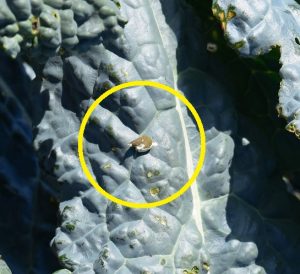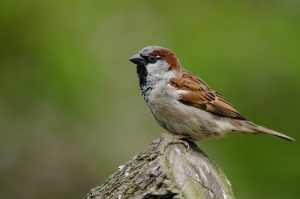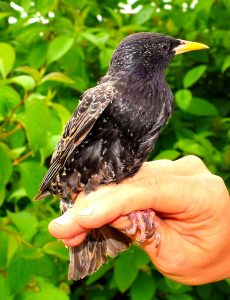Birds as Disease Vectors on Farms
In recent years, several devastating outbreaks of foodborne illness have been linked to raw vegetables. These outbreaks have resulted in thousands sickened, with many thousands-more cases likely unrecognized or unreported, and dozens killed. Particularly damaging are pathogenic Escherichia coli strains (e.g., E. coli O157:H7), which cause bloody diarrhea, vomiting, and abdominal cramps; death usually results from renal failure and loss of red blood cells. When a pathogen outbreak is traced back to a particular farm, resulting lawsuits can bankrupt a grower.

Organic agriculture embraces a vision of healthy, nutritious food grown in harmony with nature. Therefore, disease outbreaks linked to organic farms are particularly troubling. While harmful E. coli are known to be spread by a vast array of wild and domesticated animals, birds are thought to provide unique risks. This is both because deer-fencing or other barriers cannot exclude flying birds, and because feces deposited by birds in flight often land directly on leafy-green foliage (Fig. 1). Native wild birds may be discouraged from visiting farms through the removal of hedgerows and other natural vegetation, but this may only further encourage colonization by the non-native bird species (1) most comfortable in landscapes dominated by humans and (2) most-clearly implicated as vectors of human and livestock pathogens and parasites (see below). Three species of birds that are particularly common on the farming landscape are House Sparrows (Passer domesticus) (Fig. 2.), European Starlings (Sturnis vulgaris) (Fig. 3), and rock pigeons (Columba livia). These non-native species can carry and amplify a range of parasites and pathogens that will infect both humans and livestock. The routes of transmission occur with opportunities for bird contact with animal feces, livestock feed and water, and farming infrastructure. In addition, wild birds carry pathogens that can be transmitted to humans and livestock by blood-feeding insects (vectors). In some cases there is clear, definitive evidence that wild birds and livestock exchange pathogens such as E. coli and Salmonella enterica. However, some studies suggest that parasite and pathogen infections in wild birds are too low, or infrequent to present a significant risk of transmission. Thus, it is not clear how much wild birds influence disease risk on farms. Importantly, studies of parasite/pathogen transmission by wild birds regularly focus on a single disease and do not evaluate the entire spectrum of infectious organisms the birds harbor. Infectious organisms carried by wild birds can cause enteric, respiratory, skin, blood and neurological diseases in diverse livestock. These diseases impair animal health and productivity, reducing yields and incurring veterinary expenses. Furthermore, the pathogens that are infectious to humans often are sustained within bird and livestock populations before entering the food supply.


Given ever-increasing food-safety concerns and regulations, it is perhaps remarkable that a visionary group of vegetable growers is actively integrating livestock into their farming operations. There are a broad range of ecological and economic factors that underlie this decision. Key among these, livestock feces provide a direct-delivered source of manure to be used as fertilizer, while animal products draw new customers and increase revenue. Despite their many ecological and economic benefits, integrated farming systems also could change the risk/benefit equation for on-farm populations of wild birds. Livestock barns, stalls, coops, and other structures involved in livestock production provide shelter for the non-native starlings and sparrows often implicated as pathogen/parasite vectors. In turn, this brings livestock and wild birds into the close contact needed for transmission. These factors might heighten conflicts between wild birds and livestock on integrated farms.





